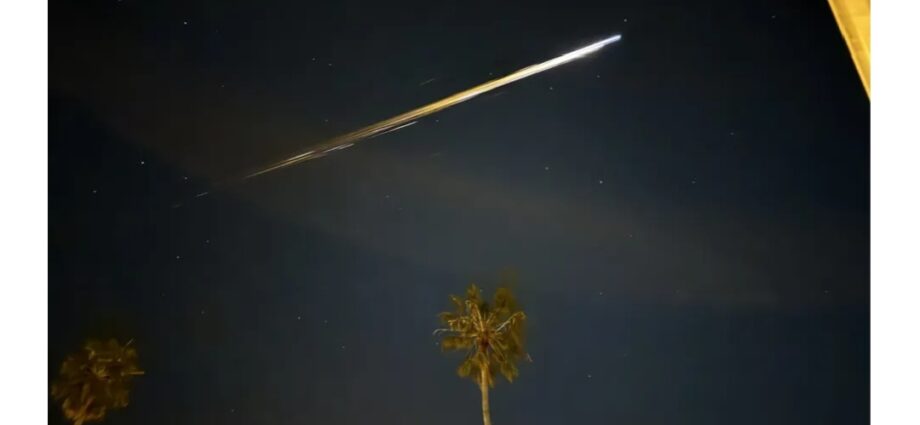On April 2, a spectacular shower of fireballs illuminated the night sky over Los Angeles and much of central and Southern California. Witnesses speculated whether the event was a meteor, a failed rocket launch, or even a UFO.
Astronomers later confirmed the fireballs were remnants of the orbital module from China’s Shenzhou-15 spacecraft, launched in November 2022. Its uncontrolled reentry sparked global concern over the dangers of space debris while offering seismologists a novel way to track such objects using ground-based seismic signals.
Sonic Booms and Seismic Discovery
Seismometers across the Los Angeles basin recorded sonic booms from the reentering debris. Using this data, researchers reconstructed the spacecraft’s atmospheric trajectory. This innovative approach, led by planetary scientist Benjamin Fernando of Johns Hopkins University, could pave the way for tracking space debris globally—even without visual observations.
“I’m not aware of work that’s been done to try to track and characterize space debris using seismic measurements,” Fernando said. He and his team presented their findings on December 9 at the AGU Annual Meeting 2024 in Washington, D.C.
Rising Risks of Space Debris
As space missions increase, so does the risk of uncontrolled debris reentries. “Pieces of debris plummet back to Earth, posing risks to lives and property,” Fernando explained.
The April 2 event inspired Fernando to analyze seismic data after hearing reports of audible booms over Los Angeles. The seismic signals confirmed the debris’ trajectory, speed, size, and breakup pattern as it moved inland from the Pacific coast.
Seismic Applications in Space Debris Tracking
While cameras and radars are effective for tracking space debris, they are scarce in remote areas. In contrast, seismometers excel at detecting minute vibrations, making them a promising tool for such events.
Fernando’s earlier work included tracking NASA’s OSIRIS-REx capsule as it reentered Earth’s atmosphere in September 2023. The Shenzhou-15 reentry marked one of the first instances of using seismic data to track space debris without prior warning.
Challenges and Future Potential
Tracking space debris via seismic signals poses challenges. Objects move in three dimensions through an ever-changing atmosphere, complicating sound propagation. Changing weather and wind conditions further hinder precise predictions of crash locations.
Despite these hurdles, researchers believe seismic techniques could help predict whether debris might strike populated areas. “It’s not outside the realm of possibility but remains quite challenging, particularly in complex terrains like L.A.,” Fernando noted.
Volcano geophysicist Kathleen McKee emphasized the value of this research. “Mitigating public safety hazards from reentering space debris is a hard problem, but definitely one worth pursuing,” she said.
This groundbreaking method highlights the potential for seismic tools to address emerging challenges in space exploration and public safety.

